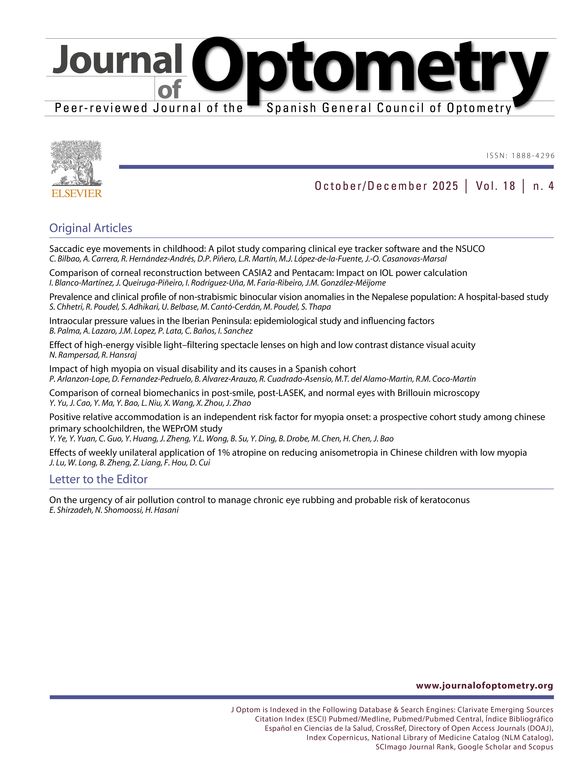I would like to thank Dr. De Bernardo and colleagues for their words on our work on the analysis of central corneal thickness (CCT). We are honored to receive a comment of someone with such extensive research experience in this field. It is true that the effects of drugs used as anesthetics may affect CCT measurements. As De Bernardo cites in her letter, Osuagwu et al.1 described corneal thickening after Tetracaine 1% drop instillation, however, we must apply a certain clinical approach to statistical data. I quote the author: “In general, the central cornea was thicker by 3μm and 4μm in eyes measured with USP, 10min after instillation of one drop of 1% tetracaine in session 1 and session 2, respectively.” These difference were statistically significant in the analysis performed by the authors, but the difference between the measurements obtained by the authors with Ultrasonic pachymetry or Topcon SP-3000P were 26–29μm (values similar to those obtained in our study); Therefore, the existence of a 3 or 4μm difference between the measurement with or without tetracaine in the USP, although statistically significant, is not clinically significant. We must also remember that these differences are lower than standard deviation and repeatability between SP3000P measures, which according to the authors was ±12μm.1 The authors describe that differences in CCT measurements pre and post anesthesia were only found with USP device; other authors found no significant differences in CCT measurements pre- and post-instillation of tetracaine 0.1% measured with Orbscan.2 This could be an indication that the measurement system may be sensitive to tear stability, while non-contact optical systems do not detect this difference in CCT. Finally, other authors3 described a temporal increase of CCT after instillation of 0.4% oxybuprocaine hydrochloride, but that difference close to 8μm disappeared after 80s. In conclusion, it can actually be a transient increase in CCT which is only detected by contact instruments, but that increase, even statistically significant, do not appear to be clinically significant.
The Impact Factor measures the average number of citations received in a particular year by papers published in the journal during the two preceding years.
© Clarivate Analytics, Journal Citation Reports 2025
SRJ is a prestige metric based on the idea that not all citations are the same. SJR uses a similar algorithm as the Google page rank; it provides a quantitative and qualitative measure of the journal's impact.
See moreSNIP measures contextual citation impact by wighting citations based on the total number of citations in a subject field.
See more






